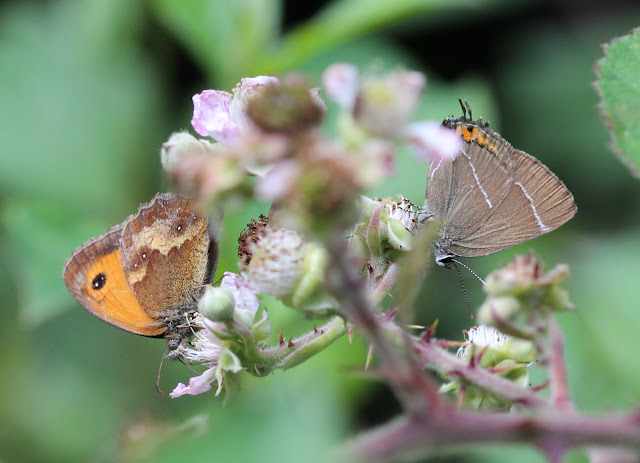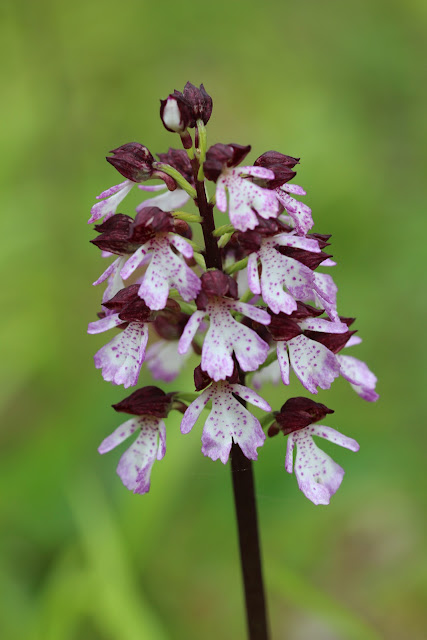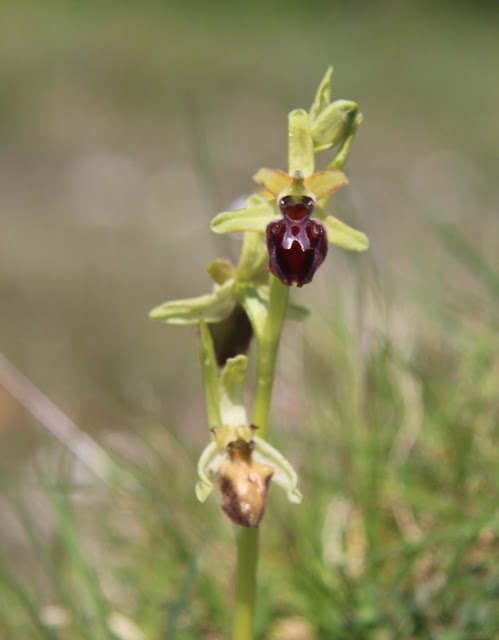In stats: 5 lifers. 215 year list. Didn't keep a local list for the first time in ages.
Overall a bit more relaxed and targeted this year with average results. The year-list did its job in keeping me going to different places.
1. Lifers. Alpine Swift, Blue-Winged Teal, Brown Booby, Canvasback, American Golden Plover. And about time too for a couple of those. But all good fun.
2. Birds I missed this year. There's a few.
Black Redstart, Snow Bunting, Shore Lark Grey Partridge, Water Pipit. White-Fronted Goose, Goshawk, Garden Warbler, Grasshopper Warbler, Tree Pipit, Yellow, Browed Warbler, Jack Snipe...
A few of these I could go and see right now, and a few more could be done with a trip to Holkham. When I first started doing this more seriously back in 2015/16 it was a revelation that I could go to Holkham and see Shore Larks and Snow Buntings, and for a few years that continued to be fun, but after a while it becomes an exercise in ticking. This year's birding simply didn't involve bumping into these birds (Garden Warbler has always been scarce on my patch). I reserve the right to go and twitch these next year, as it will have been over a year since I saw them ...
Common Crossbill has become a much harder bird in the Brecks recently, but there was a record of them at Lynford so maybe next year.
3. Local. Again, back in 2015/16 one of the fascinations was to see just what occurred in the fields and woods in walking distance of my house. And whilst most trips mainly involve seeing nothing, there's been a decent list in total. But this year, particularly post-covid, has felt a bit diminishing returns. So I've done fewer trips but nevertheless saw Wheatear, Mediterranean Gull, Redpoll, Brambling, Stonechat, and even on a dog walk where I decided not to take my binoculars had a Marsh Harrier belting south over the park. I may do more of this next year.
4. Things that didn't happen: - Didn't get to see Whinchat or Redstart locally mainly due to lack of walks at suitable times. Didn't get a local vis mig passage. Didn't get a good October day in Norfolk with Yellow-Browed warblers in number and other migrants. Didn't get a strong late winter Northerly on the Norfolk coast, one of those Skua/Little Auk winds. This winter period hasn't delivered much of what one might hope for - no White-winged gulls, few geese,
5. Good days. Had a lot of those. Frampton was great - just masses of great waders, and a memorable day at Minsmere. But again, a change of emphasis - two trips to Titchwell where we just did the reserve and kept chasing to a minimum. Great fun will do that again next year. And its no coincidence that my good days were all spent in the company of Mike and/or Dave. Am just very fortunate to have these two for birding companions - both top birders and great company. Thanks guys.
6. Memorable sights. American Black Tern and many Arctic Terns all at close range at Long Nanny. Hadn't expected to be that close. Male Hen Harrier at Eldernell. Always a fantastic sight. Grey-Headed Wagtail at Titchwell - not really expected and great views. Lady Orchids in Kent - so many! A flock of Woodlarks in a quarry on Westleton Heath, Pink-Footed Geese just arriving in Norfolk in September, Velvet Scoters at Abberton, and the sheer number of Short-Eared Owls at Wallasea.
7. Blasts from the past. Black Guillemot - been a few years since I saw one of them. Same Waxwing, Buff-Breasted Sandpiper, and Montagu's Harrier. Genuinely though I would never see another one of those in the UK.
... and so to next year. Am still keen. Bit the bullet and rejoined the National Trust so will do more Hatfield Forest. But as I get older and now I know what is possible, I'm feeling a bit more Zen about the whole birding thing so may just be spending more time going to places and seeing what's there rather than just chasing the list.
Thanks for reading. Hope I can make your visits to this site worthwhile next year.






































